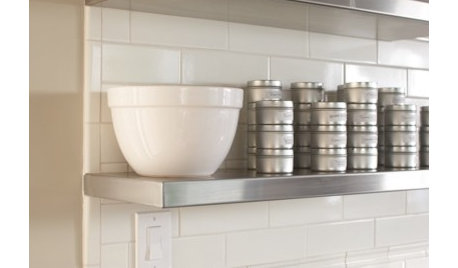Does anyone leave fluorescents on 24/7?
doug_rawlings
17 years ago
Related Stories

INSIDE HOUZZHow Much Does a Remodel Cost, and How Long Does It Take?
The 2016 Houzz & Home survey asked 120,000 Houzzers about their renovation projects. Here’s what they said
Full Story
HOUSEPLANTSMeet a Palm That's Fine With Fluorescent Light
Get the look of the tropics without the full-on sun and high humidity — parlor palm tolerates regular indoor conditions with aplomb
Full Story
DECORATING GUIDES7 Bedroom Styling Tricks Anyone Can Do
Short on time or money? You can spruce up your bedroom quickly and easily with these tips
Full Story
KITCHEN DESIGNThe Cure for Houzz Envy: Kitchen Touches Anyone Can Do
Take your kitchen up a notch even if it will never reach top-of-the-line, with these cheap and easy decorating ideas
Full Story
REMODELING GUIDESBathroom Workbook: How Much Does a Bathroom Remodel Cost?
Learn what features to expect for $3,000 to $100,000-plus, to help you plan your bathroom remodel
Full Story
KITCHEN DESIGNHow Much Does a Kitchen Makeover Cost?
See what upgrades you can expect in 3 budget ranges, from basic swap-outs to full-on overhauls
Full Story
FUN HOUZZDoes Your Home Have a Hidden Message?
If you have ever left or found a message during a construction project, we want to see it!
Full Story
DECORATING GUIDESThe Cure for Houzz Envy: Guest Room Touches Anyone Can Do
Make overnight guests feel comfy and cozy with small, inexpensive niceties
Full Story
MUDROOMSThe Cure for Houzz Envy: Mudroom Touches Anyone Can Do
Make a utilitarian mudroom snazzier and better organized with these cheap and easy ideas
Full Story
CLOSETSThe Cure for Houzz Envy: Closet Touches Anyone Can Do
These easy and inexpensive moves for more space and better organization are right in fashion
Full StorySponsored
More Discussions






gw:jasondallas-8a
shrubs_n_bulbs
Related Professionals
Kapaa Landscape Architects & Landscape Designers · Allentown Landscape Contractors · Bound Brook Landscape Contractors · Danvers Landscape Contractors · Eureka Landscape Contractors · La Vista Landscape Contractors · Lady Lake Landscape Contractors · Manhattan Landscape Contractors · West Chester Landscape Contractors · Nashville Fence Contractors · Austin Fence Contractors · Lauderhill Fence Contractors · Voorhees Fence Contractors · Newton Roofing & Gutters · Rome Roofing & Guttersgw:jasondallas-8a
mikeybob
shrubs_n_bulbs
gw:jasondallas-8a
shrubs_n_bulbs
naturelle
naturelle
audrey_gw
ralleia
creslin2
ralleia
scottplumerias